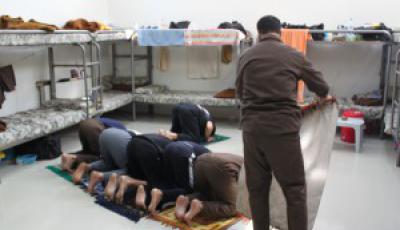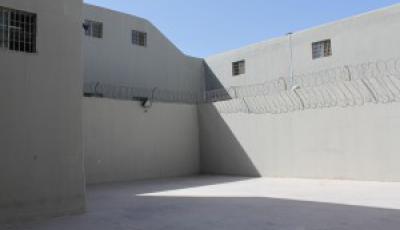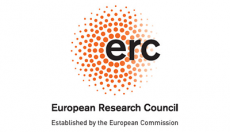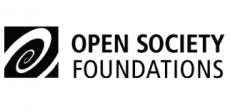Independent, Dependent, Interdependent: An Outsider’s Reflections on Prison Monitoring
Posted
Time to read
Guest post by Liv S. Gaborit, Research Assistant at DIGNITY – Danish Institute Against Torture where she works in the department for Preventing Torture in Places of Detention. Liv specialises in prison research from a social psychological perspective, connecting societal structures to individual experiences. Her work is focused on prisons in the global south, with involvement in the Philippines, Sierra Leone, and the MENA region.
From the 23rd to the 26th of April a group of 45 prison monitors from across the Middle East and North African (MENA) region gathered in Beirut for the biannual meeting of the Regional Forum for Monitoring Places of Detention. Arranged by DIGNITY – Danish Institute Against Torture in cooperation with its project partner Restart Center, this international event sought to share ideas and strategies among groups working to prevent torture in detention. In this post I summarise some of the key issues that were covered in a bid to better understand the complex and varied nature of prison monitoring.

At the forum, NGOs who were service providers and the more legally-focused monitoring agencies shared opinions on how to approach the issue of independence. Those offering services in prison, undertake regular visits, using their familiarity to gain in depth knowledge of the institution. For example, one organisation explained how the people they had offered rehabilitation, served as key informants and gatekeepers inside the prison. Another reported asking the Shawish (inmate leader) whom to talk to. The service providers gave the impression they knew the everyday life of the prisons and were able to deploy such knowledge as their base from which to gather further information.
In contrast, participants from the more legally-focused NGOs, who have more peripheral involvement with the prison authorities, expressed concerns about the possible bias arising from following former clients or inmate leaders when monitoring prisons. These groups called for caution about the power this strategy could grant certain inmates. They argued for the importance of talking to a random selection of interviewees during monitoring visits in creating objective reports.

For those NGOs who offered such services, the answer lay in adding a monitoring component to their work. On the one hand, they cooperated with the system to gain access and alleviate the immediate pains of prisoners. On the other, they refused to adopt the values of prison authorities, maintaining their focus on respecting the human rights of the prisoners by scrutinising and criticising the authorities.
So, how far should monitors go for access and independence? Must one be sacrificed for the other? The NGOs represented at the forum had reached different answers to this question and chose a variety of strategies for their encounters with prisons. My knowledge about their work is insufficient to conclude whether some of them have chosen better strategies than others. However, my involvement with the research project Understanding Prison Reform, conducted with prison reform NGOs in Kosovo, Sierra Leone, and the Philippines, leads me to believe that the particular styles with which NGOs approach prisons reflect the demands and obstacles of their particular local context.
The different approaches of NGOs are meaningful to the specific local context and call for further exploration of new ways of understanding the independence or interdependence of monitoring mechanisms. Those who might argue for full independence overlook the dependence inherent in encounters between monitors and prison authorities. The monitor is inevitably dependent on the law or on the prison authorities to grant access. At the same time, the monitor must be able to act independently in order to subject the prison authorities to scrutiny and critique. It is also imperative that monitoring results in dependable reports, which must be valid and truthful no matter what level of interdependence exists in the relation between monitoring agency and prison authority.
If we understand all prison monitoring as a balancing act between independence, dependence and interdependence, all prison monitors face dilemmas similar to the ones that were so visible at the forum. As we learned at the forum, there are many roads through the prison landscape with differing levels and kinds of independence and dependence. The goal, however, remains the same: a dependable report that can be the basis of positive change.
For more on monitoring places of (immigration) detention, see earlier posts on Draft Standards Framework for the Treatment of Immigration Detainees and Developing European Standards of Detention.
For a photo blog on Roumiah Prison, see here.
Want to start a discussion about this topic? Post a comment here or on our Facebook page. You can also tweet us.
____________________
How to cite this blog post (Harvard style):
Gaborit L (2014) Independent, Dependent, Interdependent: An Outsider’s Reflections on Prison Monitoring. Available at: http://bordercriminologies.law.ox.ac.uk/independent_dependent/ (Accessed [date]).
Share
YOU MAY ALSO BE INTERESTED IN
With the support of









